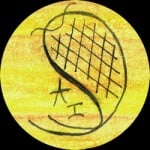Marking Gauge Build
Welcome! / Forums / General Woodworking Discussions / Marking Gauge Build
- This topic has 49 replies, 17 voices, and was last updated 10 years ago by
 Greg Merritt.
Greg Merritt.
-
AuthorPosts
-
 9 February 2013 at 5:38 pm #7692
9 February 2013 at 5:38 pm #7692I have always been fascinated by marking gauges. They are such simple looking devices but, as with all things that look simple, it is the details that make the difference. I have purchased a couple of inexpensive gauges through the years and have built a couple. None of them have satisfied me in use. After seeing Paul’s suggestion of angling the pin, I went back to work on designing yet another gauge. I have also been reading Paul’s blog series on journaling and put that to use while working on this design. I am building this gauge this weekend and will post a follow up with either my success or failure.
Attachments:
You must be logged in to view attached files.
 9 February 2013 at 9:38 pm #7695
9 February 2013 at 9:38 pm #7695Looks good Gregory
I recently made one similar to yours, I am going to make another one for mortises. It will have two fixed pins that will match my chisel width.
 10 February 2013 at 12:43 am #7696
10 February 2013 at 12:43 am #7696Todays progress. Heads are morticed, beams fitted and wedges made. One hand operation is now verified. The wedge locks the beam very well with just thumb pressure. Tomorrow I will shape the heads and fit the pins. I will be doing just as Stephen, the second gauge will be my mortise gauge with fixed pins in a reversible beam. I will need to cut a clearance slot for the pins to pass through when reversing the beam….more tomorrow.
Attachments:
You must be logged in to view attached files.
Very nice drawings, Gregory! A couple of weeks ago I made a very quick one by cutting a circular piece with the coping saw and sticking a 3/4 by 14 inch dowel through the center. Close to the end of the dowel I drilled a hole for a pencil and the dowel itself is held by a screw threw the circular piece.
It’s not pretty at all but I found that I had nothing to gauge the width of a wider board and I needed it quickly. How do you gauge boards to width that extent the regular gauges?
Florian
For everything smaller I use the veritas dual marking gauge. It’s easy to adjust and works very well. The other gauge I have is a single pin from Crown. It looks great but after only a few uses it didn’t work anymore. The fixing thumbscrew has what we call the eternal thread. Definitely, a self-made one can’t be beaten 😉


This is a great project Gregory, it looks like a really useful addition to a toolset. You have inspired me to make one myself. I think I will make one with a 12 inch beam. The one I have is single pin on side and a double pin on the other which is a real handy marker but the beam is only about 5 inches long.
 10 February 2013 at 4:41 pm #7703
10 February 2013 at 4:41 pm #7703Florian,
Gauges for longer spans than what your typical marking gauge will do are called “Panel Gauges”. Typically they have a longer fence (think 8″ range), larger arm, and a rabbet cut into the fence to aid in keeping everything aligned. See http://blog.lostartpress.com/2011/12/02/the-hamilton-panel-gauge/ for a beautiful example. Rob Cosman sells one on his site as well, but these things go for quite a lot of money for a tool that I think has traditionally been shop made.
 10 February 2013 at 4:46 pm #7704
10 February 2013 at 4:46 pm #7704Gregory,
I guess I’m not understanding why you need to make a clearance slot for the pins…why not just withdraw the beam the other way, where there are no pins to deal with? or are you planning some kind of multi-gauge? All the combination gauges I’ve used have all the pins on the same end of the beam, just on opposite sides. It would be easy enough to do with the PS design with skewed pins, just use opposite corners.
There must be something here I’m not understanding 🙂

Thanks Andy,
that’s indeed a nice gauge! Mine is ugly but I was not too far away from that design with my pencil through the dowel 😉
I also found holes every 5 milimeter in my carpenter’s square which is alright for ripping layout. Unfortunately they are drilled along the short beam and not along the long beam.
Florian

 10 February 2013 at 5:57 pm #7710
10 February 2013 at 5:57 pm #7710That is correct Florian. The other option would be making an adjustable gauge, which would be a bit more complicated. I am making one to fit my 10mm mortise chisel to start with and then possibly 8mm after that. Even if I make an adjustable one in the future, the fixed ones will be my go-to gauges for quick work.
Attached is a picture of the gauge I made.
Attachments:
You must be logged in to view attached files. Anonymous10 February 2013 at 10:41 pm #7715
Anonymous10 February 2013 at 10:41 pm #7715Cool thread guys. I know using a darning needle or the scribe from a combination gauge has been mentioned. Any other alternatives?

Jeff, et al,
Paul has mentioned using spring steel piano wire for making/replacing gauge pins. It’s “high carbon” and hardened. Quite cheap. I bought a roll on Amazon for a couple of bucks. At 144′ it will probably last me the rest of my gauge-making life. http://www.amazon.com/Carbon-Finish-Specifications-Diameter-Precision/dp/B000VYHKO4/ref=sr_1_1?ie=UTF8&qid=1360551197&sr=8-1&keywords=piano+wire+.051
-
AuthorPosts
- You must be logged in to reply to this topic.
